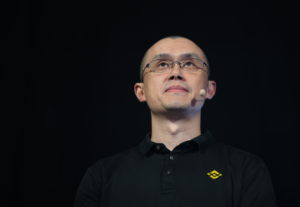Many Entrepreneurs Go Astray In The Middle Of The Process To Create A Worthy Product

Vesko Kolev is a business and technology leader with 15 years of professional experience. As VP of Product, Developer Tooling, at Progress he is responsible for a team of 150+ software engineers, technical support engineers, product managers, product marketers and UX designers, based in the US and Bulgaria.
More often, we tell the stories of startup successes. Yet, when we refer to statistics, it is usually related to the failure rates. According to CB Insights, 70% of newly founded companies fail 20 months after first raising financing, with the main reason being “no market need.” Startups are increasingly trying to gain market share and disrupt established leaders. At the same time, the number of new products that actually solve a problem somebody cares about enough to pay for is too low.
To come up with new product ideas, many entrepreneurs and corporate leaders tap into their internal resources. Hackathons, intrapreneurship programs, incubation projects, and compelling incentives are only some of the approaches used. While these initiatives are great and do serve their purpose, they need to be focused on discovering problems worth solving rather than just providing solutions that nobody cares about.
Very often initial solutions, no matter how spot-on they might look, don’t solve the problem at hand or at least cannot drive sustainable business growth. For instance, in my company – Progress, we started developing our new VR/AR technology initially aiming to create UI components for VR/AR apps. Shortly after that, we saw that the market wasn’t as mature as we thought, and there was no clear concept of what a VR/AR app should be. Although our strategy back then had potential, it wouldn’t have made us successful. We quickly switched gears to position ourselves as the company that enables the first VR/AR apps. It takes many experiments and iterations as well as some persistence to look at the same problem multiple times in entirely new ways before coming up with a great solution.
True and useful innovation is a long process that includes several key phases. First, you need to discover a problem that really needs to be solved. Then you need to get to the heart of the problem and find the most direct approach to solve it through unconventional ways of thinking. The solution you come up with should be usable, feasible and one that significantly improves on previous solutions if such exist. Only then you can start experimenting and building a successful product.
Discovering a problem worth solving
There is no single recipe for finding such problems. Usually, they are what stands between companies and their goals and what keeps leaders and decision-makers up late at night. They are issues that cause frustration and prevent collaboration. They often are threats to the very existence of the business.
Problems worth solving are urgent and pervasive, with individuals or organizations ready to pay to have them solved. They often reside outside of your office – in the outer world where the people are experiencing them.
For example, our newest product is a result of the proactive identifying a problem worth solving. We captured the challenges that developers and designers experience while building apps together and saw that no one else before us had addressed them. Seizing this opportunity, we created the first-of-its-kind solution to bring design and development together.
The problem you choose should be within your expertise and should echo your experience and passion. It should be aligned with your mission, vision, and strategic goals. This will ensure that you have the needed credibility to solve it in the eyes of your target persona.
First-principles thinking vs. thinking by analogy
Many entrepreneurs start looking for a solution by asking affected people and existing customers, if they have any, what they want. “If I had asked people what they wanted, they would have said faster horses,” said Henry Ford. Many people can only imagine what they are aware of. This is obviously based on their own knowledge and experience and thus – this is something that already exists. Innovation, however, doesn’t rely solely on intuition – it actually ignores intuition and starts from a blank slate.
To start looking at problems without heavily relying on intuition, corporate leaders and entrepreneurs should adopt a scientific way of thinking. The traditional way of thinking is to follow the common wisdom that limits our ideas by what has already been created, i.e. “thinking by analogy.”
On the other hand, there is a more scientific approach, called “first principles thinking.” A first principle is a basic proposition or assumption that cannot be deduced from any other proposition or assumption. This means that you need to break down a problem to the simplest parts you know are true and start solving it from there. This way, you can see which factors you can influence and how this brings you closer or farther to the solution.
Elon Musk, Bill Gates, Sergey Brin and Larry Page are among the great proponents of the “first principles thinking.” Elon Musk gives an example of its application through the cost and production of battery packs, which have historically been expensive – $600 per kilowatt hour, according to him. Applying first principles thinking, he explains, you can easily find a cheaper way to produce them. The first step was to start asking what batteries are made of and what the stock market value of the material constituents is. After figuring out those, he saw that the cost could be reduced to $80 per kilowatt hour. The only thing left was finding a smart way to take the materials and assemble them into the shape of a battery. As a result, Musk had a working battery produced for far less money.
But wait – not everyone is a Musk! True, but this is exactly “thinking by analogy” – we just accept what most people around us believe in. That we are limited by our talents and our innate abilities. Wrong! We might not be Musks today, but if we start practicing “first principles thinking” and put a deliberate effort to solve a problem that we deeply care about, we can be. It’s just a matter of focus, persistence and continuous improvement.
Products people want to buy are created by people who want to make a change
Once you’ve found your solution, you can start building your product. Great products are the result of strong teams of professionals, a culture that encourages creative thinking and learned failure, and a constant push for improvement. These products share three main characteristics:
- obviously they solve a problem enough people need to have solved in a way unseen so far;
- they are intuitive and easy to use;
- they can be built with the time, talent and technology your team has.
If I have to single out one thing that is critical to success in this phase, it would be your team. Make sure that you have a team of people that deeply care about what you are trying to achieve. People that enjoy the process of overcoming “this big challenge ahead.” People that strive to change the world, not just to come to work from 9 to 5 and get paid. It will be hard, so make sure it is fun.
Learn to fail
“I have learned 50,000 ways it cannot be done, and therefore I am 50,000 times nearer the final successful experiment,” Thomas Edison once said. Nothing accelerates innovation as much as failure. Experimenting – coming up with solutions, testing, validating, accepting and/or rejecting based on outcome – must include failed attempts. If it doesn’t, you are not doing it right. Failure – seeing in practice what doesn’t work – helps you narrow your options and get faster to what would work.
To illustrate this, let’s go back to the VR/AR technology example. Along with finding our unique market positioning, we were also looking for the vertical or verticals that were receptive and mature enough to adopt it. It took us several unsuccessful attempts before finding the right one.
Creating an environment where failure is accepted and encouraged will set your teams free to think of solutions they wouldn’t otherwise consider. They will feel empowered to reject non-functional solutions knowing that the true one might be just another experiment away.
To sum up, creating an innovative product is a whole journey rather than a spark of inspiration. It’s a purposeful process starting with a problem worth solving and ending with a product people would happily want to pay for. Where most companies and entrepreneurs go astray is exactly in the middle, where they have to scratch off everything they know and start creating anew. But once you’ve successfully passed this phase, it will be much easier to push through what’s ahead and succeed.




























